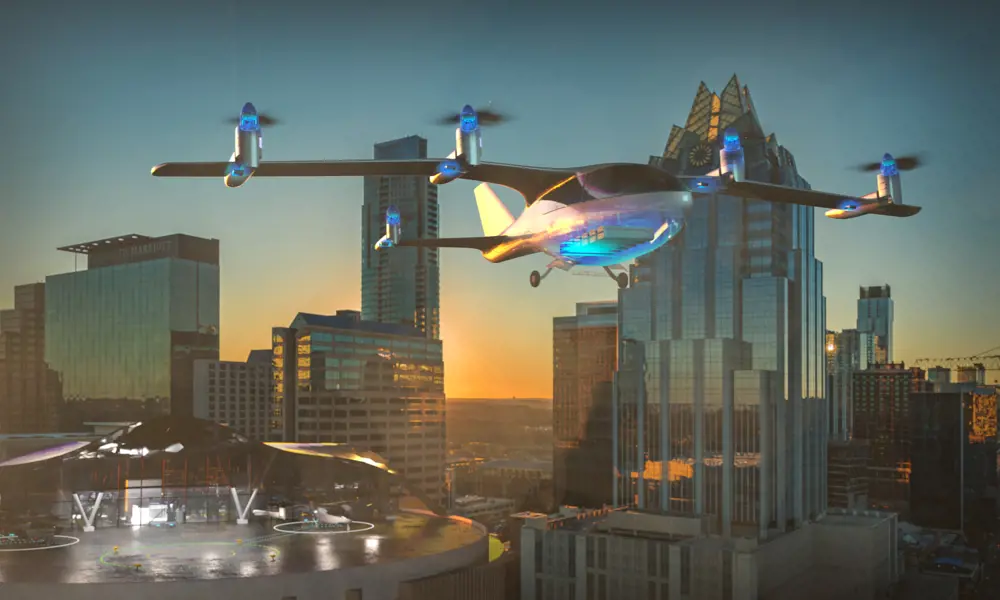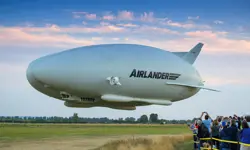
Can electrification solve aviation’s emissions problem?
By 2030, 8.6 billion people will inhabit the Earth; six billion of those will be annual flyers and five billion will reside in cities. The increase in emissions of greenhouse gases (GHG) from human activity is likely to have been responsible for escalating global average temperatures in the last century. In 2019 alone, global annual emissions of CO2 created by humans reached 33 billion tonnes, with aviation representing approximately 2%. Through the International Civil Aviation Organisation, the aerospace industry is playing its part in managing the environmental impact of growing aviation traffic and has set itself a target to reduce CO2 emission intensity, with aspirations to drive to 2% annual fuel efficiency and carbon neutral growth from 2020 onwards.
In 2019 alone, global annual emissions of CO2 created by humans reached 33 billion tonnes, with aviation representing approximately 2%
To support the rising demand for air travel and achieve CO2 emissions targets, the aviation industry is developing environmentally friendly technologies and practices. The aviation sector needs an overarching strategy that addresses aircraft and engine design, air traffic management and operation, development of sustainable aviation fuels and also market-based measures. In this direction, the industry has recently implemented a global market-based measure system called CORSIA (Carbon-Offsetting and Reduction Scheme for International Aviation).
Electrification is impacting many transportation systems because of its ability to create pure electric and hybrid machines with lower CO2 footprints. For the first time, aviation is now exploring electrification for passenger-carrying aircraft to unlock environmental as well as many other benefits. While pure electric flight will power smaller aircraft, larger aircraft will need to rely on hybrid electric solutions for the foreseeable future, combining electrification with evolutions of the gas turbine. There are many challenges that lie ahead, in technology, systems engineering and skills, but electrification is set to have a similar impact on aviation as when gas turbines replaced piston engine propulsion. We are at the dawn of the third generation of aviation.
Rolls-Royce is embracing sustainability with an environmental strategy for aviation that has three strands: increasingly fuel efficient products; encouraging the development of environmentally friendly and sustainable aviation fuels; and pursuing the electrification of aviation. On efficiency, the Trent XWB has reduced CO2 emissions by 15% relative to the first Trent engines (mid 1990s). The fuels industry is developing sustainable aviation fuels based on biomass, organic waste and fully synthetic processes and we expect to see significant scaling of these processes with time. While gas turbines will power large aircraft for the next 50 years or more, electrification will play an increasing role in propelling smaller aircraft and in enabling new approaches to large aircraft efficiency.
There are many challenges that lie ahead, in technology, systems engineering and skills, but electrification is set to have a similar impact on aviation as when gas turbines replaced piston engine propulsion
Regional hybrid aviation is set to revolutionise intercity mobility by 2030. It is possible that we will see a new type of regional air transport, being more fuel efficient and quieter than current turboprops, which will bring a new approach to mass transportation. The main challenges in this power class include the technology for very high power to weight machines, power electronics and batteries, thermal management, and systems integration complexity. But we are on a trajectory to solve these issues.
For larger aircraft, the gas turbine will remain the main source of thrust as only chemical fuels can deliver the energy density required for medium- to long-haul flights. Because of this, sustainable aviation fuels will become the cornerstone of environmental performance in these markets. However, electrification will enable simplification of gas turbine internal design, unlock new methods of managing aircraft drag, and open new benefits to aircraft at platform level.
However, to realise this exciting future, the entire aviation industry needs to coordinate with policymakers, regulators and governments internationally. Global standards are critical to the aviation industry as products are utilised around the world. Some do already exist but most areas need development to accommodate new technologies. This third generation of aviation will need governmental support in research and technology, test infrastructure, and legislation. Academia and industry will also have to join efforts to develop key knowledge, technology and a successful supply chain in:
- drop-in sustainable aviation fuels at required scale by the fleet in operation and viable economics, to ensure that aviation is environmentally sustainable and continues to bring social and economic benefits
- electrical machines, at multi MW-class and to aerospace standards with high performance and high integrity
- advanced controls, to manage and optimise electrical power usage across hybrid system including energy storage
- high-voltage lightweight electrical systems with advanced thermal management and cooling capacity
- high power density and highly efficient power electronics, which require low-loss advanced semiconductor devices and high frequency switching capable of operation at high voltage and high altitude
- energy-dense batteries that can withstand harsh thermal and electrical cycling.
As well as posing significant technical and systems integration challenges, these technologies also need to meet safety and certification standards, which are significantly higher than many other applications.
We are now at the dawn of a new generation of aviation that will see new aircraft designs and the industry serving customers in many new ways. Aviation is now set to redefine transportation
As a stepping stone to a more electric future, Rolls-Royce is leading an exciting challenge to build the world’s fastest all-electric aircraft. This zero-emissions plane is planned to make a run for the record books with a target speed of more than 480 kilometres per hour. With our partners, we have support from the UK government to develop this all-electric aircraft from concept to flight test in just 36 months. Our aim is to stimulate the electrical supply chain and we hope to excite new electrical engineers to pursue a career in aviation. In hybrid electric propulsion, we are also leading the propulsion challenges in the E-Fan X project, which when flying will demonstrate hybrid electric propulsion at megawatt scale.
Rolls-Royce has a proud history powering aviation from the Eagle to the Griffon in piston engines and from the Welland to the UltraFan® in jet engines. We are now at the dawn of a new generation of aviation that will see new aircraft designs and the industry serving customers in many new ways. Aviation is now set to redefine transportation. Rolls-Royce is proud to be pioneering this challenge but for electrification to truly have an impact, the entire aviation industry needs to embrace it on a global scale.
***
This article has been adapted from "Can electrification solve aviation's problem?", which originally appeared in the print edition of Ingenia 79 (June 2019).
Contributors

Paul Stein FREng is a Technology and Buisness Leader. At the time of publication, he was Chief Technology Officer at Rolls-Royce and he then became Chairman of the Rolls-Royce SMR. Prior to this role, Paul was Director General, Science and Technology, at the Ministry of Defence and Managing Director of Roke Manor Research Ltd. He is a Fellow of the Royal Academy of Engineering, the Royal Aeronautical Society and the Institution of Engineering and Technology.
Keep up-to-date with Ingenia for free
SubscribeRelated content
Aerospace

ALMA – the high altitude observatory
The Atacama Large Millimetre/submillimetre Array (ALMA) is the largest and most expensive ground-based telescope built, revolutionising our understanding of stars and planetary systems. Building it in the Atacama Desert in Chile required the ingenuity of hundreds of engineers.

Communicating with outer space
The Royal Academy of Engineering awarded a team at BAE Systems the Major Project Award in June 2016 for their development of a powerful satellite modem system, pivotal in enabling the precise control of the pioneering Rosetta spacecraft and the first-ever soft landing of a spacecraft on a comet.

An aircraft like no other
The Airlander made headlines when it embarked on its first test flight in August 2016 as the world’s largest aircraft. Chris Daniels at Hybrid Air Vehicles Limited, and David Burns, Airlander’s Chief Test Pilot, talk about the engineering that helped it reach this stage and plans for the craft’s future.

Q&A: Lucy Harden
Lucy Harden is a mechanical engineer on BAE Systems’ Digital Light Engine Head-Up Display development programme. She devises innovative solutions for pilots to display essential flight information that sits directly in their line of sight and is overlaid onto the real world.
Other content from Ingenia
Quick read

- Environment & sustainability
- Opinion
A young engineer’s perspective on the good, the bad and the ugly of COP27

- Environment & sustainability
- Issue 95
How do we pay for net zero technologies?
Quick read

- Transport
- Mechanical
- How I got here
Electrifying trains and STEMAZING outreach

- Civil & structural
- Environment & sustainability
- Issue 95